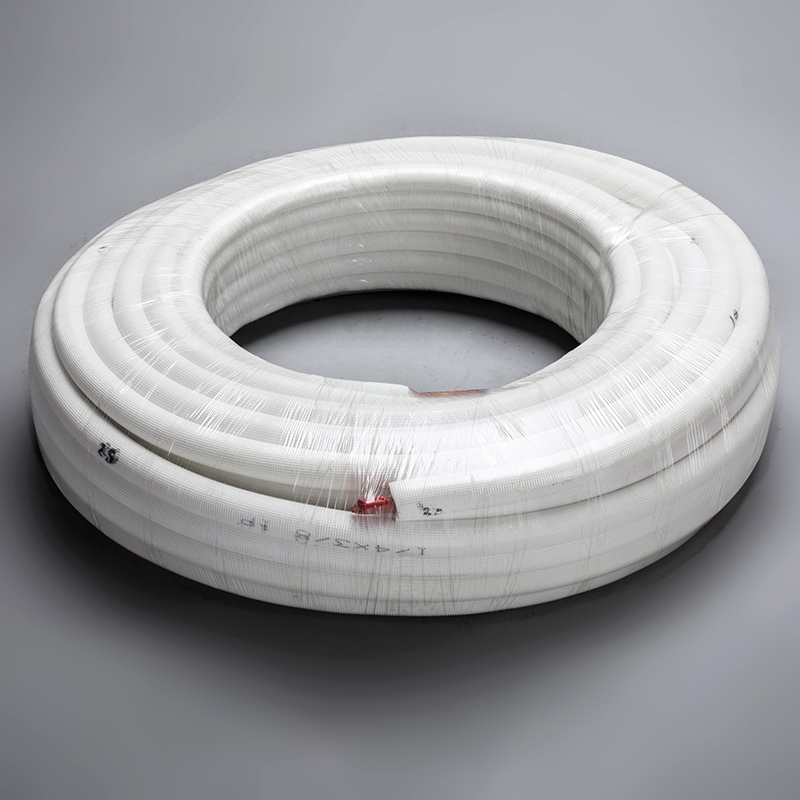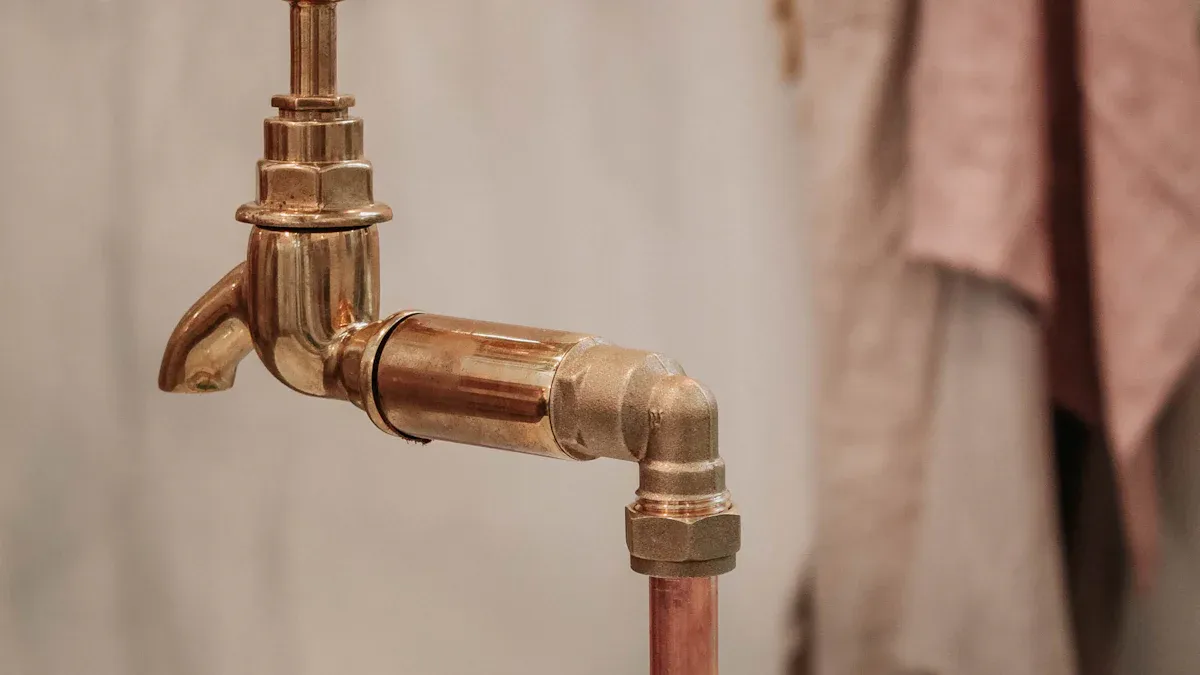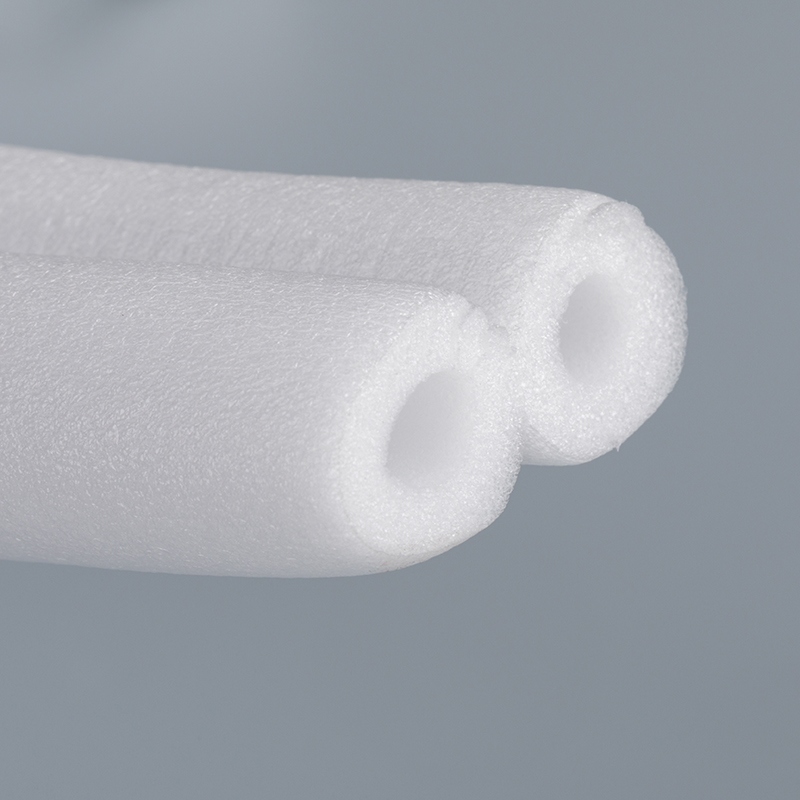Understanding Copper Pipe Size Differences

Copper pipes are essential components in plumbing systems, and understanding their differences is key to making informed choices. When you write a "What" blog post on "What are the differences between copper pipe sizes," it's important to highlight how variations in wall thickness, durability, and applications make these pipes suitable for diverse needs. Selecting the right size is crucial for ensuring your plumbing system functions efficiently and safely.
Properly sized copper pipes help prevent leaks and poor connections, significantly improving safety.
Choosing the correct pipe size and type enhances the system's overall durability and performance.
By focusing on these factors, your blog post can guide readers in selecting the appropriate fittings to create a dependable and long-lasting plumbing system.
Key Takeaways
Pick the right copper pipe for your plumbing job. Type K works for high pressure, Type L for most uses, and Type M is cheaper.
Know that thicker walls make pipes stronger. Thicker pipes handle more pressure and last longer, so choose wisely.
Check pipe sizes to match fittings. Use a string or special tools to get the right size.
Ask a plumber if you're unsure. Experts can help you pick the right pipe and follow local rules.
Think about future plumbing needs. Stronger pipes now can save money and work later.
Types of Copper Pipes

Type K Copper Pipes
Characteristics of Type K
Type K copper pipes stand out as the most durable option due to their thick walls. This durability makes them the heaviest and most expensive among copper pipe types. These pipes are designed to handle high-pressure systems and resist wear over time. Compared to Type L and Type M, Type K pipes have the thickest walls, which contribute to their superior strength. They are less likely to corrode or fail under demanding conditions, making them ideal for long-term use.
Best Applications for Type K
You will find Type K pipes in underground water mains, where their durability ensures reliable performance. They are also used in commercial buildings, fire protection systems, and industrial applications. These pipes are suitable for transporting water, oil, and even HVAC systems. If you need a pipe for main water lines or underground installations, Type K is the best choice.
Type L Copper Pipes
Characteristics of Type L
Type L copper pipes offer a balance between durability and affordability. Their walls are thinner than Type K but thicker than Type M, providing moderate strength. These pipes resist corrosion, making them suitable for both indoor and outdoor use. They can handle hot and cold water systems, ensuring versatility for various plumbing needs. Type L pipes are easy to work with and can be soldered without difficulty.
Best Applications for Type L
Type L pipes are commonly used in residential and commercial plumbing systems. They are ideal for water supply lines, heating systems, and natural gas lines when installed correctly. Their corrosion resistance ensures clean water delivery over time, making them a reliable choice for general plumbing purposes.
Type M Copper Pipes
Characteristics of Type M
Type M copper pipes are the thinnest and most affordable option. Their lightweight design makes them easy to install, but they are less durable than Types K and L. These pipes are prone to corrosion and may develop pinhole leaks over time. While manufacturers claim a 50-year lifespan, they often last only about 20 years in practice.
Best Applications for Type M
Type M pipes are popular for residential plumbing, especially for branch supply lines. They are a cost-effective choice when building codes permit their use. If you need a budget-friendly option for domestic water systems, Type M pipes are worth considering.
DWV Copper Pipes
Characteristics of DWV
DWV copper pipes, short for Drain, Waste, and Vent pipes, are designed for low-pressure systems. These pipes have thinner walls compared to other types, which limits their maximum pressure rating to 15 psi. You can easily identify them by their yellow markings. DWV pipes are typically larger in diameter, making them suitable for carrying waste and venting gases. However, their thin walls make them unsuitable for high-pressure applications like water supply lines.
In older homes, DWV pipes were a common choice for plumbing systems. Over time, they have been largely replaced by PVC or ABS plastic pipes in modern construction. Despite this, DWV pipes remain useful for specific scenarios, especially when repairing or maintaining older plumbing systems.
Best Applications for DWV
DWV copper pipes excel in drain and vent systems. Their larger diameters allow them to handle waste and vent gases effectively. You will often find these pipes in older homes and commercial buildings where they were originally installed.
Here are some typical scenarios where DWV pipes are preferred:
Used in older homes for drain and vent systems.
Suitable for above-ground applications only.
Ideal for repairs in older buildings with existing copper plumbing.
DWV pipes are not recommended for high-pressure systems. Their low-pressure rating and thin walls make them unsuitable for water supply lines. If you are working on a modern plumbing project, you may want to consider alternatives like PVC or ABS pipes. However, for maintaining or repairing older systems, DWV pipes remain a practical choice.
💡 Tip: Always check local building codes before using DWV pipes in your project. Some areas may have restrictions on their use.
What Are the Differences Between Copper Pipe Sizes?
Wall Thickness and Durability
Comparison of Wall Thickness Across Types
Copper pipes differ significantly in wall thickness, which directly impacts their durability. The table below highlights the wall thickness of the most common types of copper pipes:
Type | Wall Thickness (inches) | Durability Description |
|---|---|---|
Type K | 0.049 (½ inch) | Thickest walls, most durable, used in commercial plumbing. |
Type L | 0.045 (¾ inch) | Durable, used for interior water supply and repairs. |
Type M | 0.032 (¾ inch) | Thinnest walls, less durable, easier to work with. |
Type K pipes have the thickest walls, making them the most durable option for high-pressure systems. Type L offers a balance of strength and versatility, while Type M, with its thinner walls, is more suited for low-pressure applications.
Impact on Durability and Pressure Handling
Wall thickness plays a crucial role in determining how much pressure a pipe can handle. Type K pipes excel in high-pressure environments, such as underground service lines and fire protection systems. Type L pipes are reliable for residential and light commercial use, handling moderate pressure effectively. Type M pipes, while affordable, are less durable and better suited for low-pressure residential plumbing. Choosing the right type ensures your plumbing system remains safe and efficient.
Cost and Practicality
Price Variations Between Types
The cost of copper pipes varies based on their wall thickness and intended use. Type K pipes are the most expensive due to their durability and strength. Type L pipes offer a mid-range price, balancing cost and performance. Type M pipes are the most affordable, making them a popular choice for budget-conscious homeowners.
Suitability for Residential vs. Commercial Use
Each type of copper pipe serves different practical needs:
Type M: Ideal for residential plumbing with low-pressure requirements.
Type L: Suitable for both residential and commercial plumbing, offering durability and versatility.
Type K: Best for commercial applications, such as underground service lines and high-pressure systems.
Understanding these differences helps you select the most cost-effective and practical option for your project.
Common Applications
Residential Plumbing Needs
In residential plumbing, the type of copper pipe you choose depends on the specific application:
Type K: Used for main water lines and underground installations.
Type L: Common for indoor plumbing and repairs of old water lines.
Type M: Popular for household water distribution and extensions of interior water supply lines.
Always check local building codes to ensure compliance when selecting a pipe type for your home.
Industrial and Specialized Uses
Copper pipes also play a vital role in industrial applications. The table below outlines their specialized uses:
Type | Applications |
|---|---|
Type K | High-pressure applications, underground service lines, fire sprinkler systems, industrial plumbing |
Type K pipes are the go-to choice for industries requiring high durability and pressure resistance. They are commonly used in fire protection systems, HVAC setups, and underground installations.
💡 Tip: For industrial projects, consult a professional to ensure the selected pipe meets all safety and performance standards.
How to Measure and Select the Right Copper Pipe Size

Measuring Copper Pipe Sizes
Nominal vs. Actual Pipe Size
When working with copper pipes, you may notice a difference between the nominal and actual pipe sizes. The nominal size refers to the approximate inside diameter of the pipe, while the actual size measures the outside diameter. This distinction is important because fittings and connections rely on the actual size for a proper fit. Always verify the actual size to avoid mismatched components.
Tools for Measuring Pipe Diameter
Accurately measuring the diameter of a copper pipe ensures compatibility with fittings and fixtures. Several methods and tools can help you determine the size:
Check for Labels: Some pipes have size markings printed on them. Look for these labels before measuring manually.
The String Method: Wrap a piece of string around the pipe to measure its circumference. Then, use a conversion chart to find the corresponding diameter.
Specialized Tools: Tools like the UFS-105 Copper Pipe Diameter Gage simplify the process. This tool matches the pipe's external diameter to pre-measured circles, providing quick and accurate results.
💡 Tip: The String Method is especially useful for pipes without visible labels or when working in tight spaces.
Factors to Consider When Choosing a Pipe
Water Pressure and Flow Requirements
The water pressure and flow rate in your plumbing system play a significant role in pipe selection. Pipes with thicker walls, like Type K or Type L, handle higher pressure better. For residential systems with moderate pressure, Type L pipes are a reliable choice. Always match the pipe's pressure rating to your system's needs to ensure safety and efficiency.
Compatibility with Fixtures and Appliances
Copper pipes must align with the fixtures and appliances in your home. Ensure the pipe size and type match the fittings to prevent leaks. For example, Type M pipes may not meet building codes in some areas, making them unsuitable for certain installations. Additionally, consider the temperature and pressure requirements of your appliances to select the most compatible pipe.
Professional Tips for Selecting Copper Pipes
Consulting a Plumbing Expert
When in doubt, consult a professional plumber. Experts can assess your plumbing needs, recommend the right pipe type, and ensure compliance with local building codes. This step minimizes the risk of improper installation and costly repairs.
Planning for Future Plumbing Needs
Think long-term when selecting copper pipes. L-type pipes, for instance, offer excellent durability and corrosion resistance, making them a cost-effective choice over time. They withstand higher pressure and acidic water better than M-type pipes, reducing the need for frequent replacements. Investing in high-quality pipes now can save you money and effort in the future.
💡 Note: Always factor in environmental conditions, such as water acidity, when choosing copper pipes. This ensures your plumbing system remains reliable for years to come.
Copper pipes come in four main types: Type K, Type L, Type M, and DWV. Each type has unique characteristics and applications, as shown below:
Pipe Type | Wall Thickness | Best For | Applications |
|---|---|---|---|
Type K | Thicker than Type L/M | Underground water lines | Commercial plumbing, sprinkler systems |
Type L | 0.045 inches (¾-inch) | Interior water lines | Hot water systems, fire protection |
Type M | 0.032 inches (¾-inch) | Domestic water lines | Affordable home plumbing |
DWV | 0.040 inches (1¼-inch) | Drain and vent lines | Older homes, not common in new construction |
Selecting the right pipe ensures durability and efficiency. Consulting a professional helps you avoid costly mistakes. Copper pipes, though initially expensive, offer long-term benefits like durability and minimal maintenance, reducing emergency repairs and ensuring reliable water supply.
💡 Tip: Always consider your plumbing needs and local codes before making a decision.
FAQ
1. How do I know which type of copper pipe to use?
You should consider the application, water pressure, and local building codes. For underground lines, choose Type K. For general plumbing, Type L works well. Type M suits low-pressure residential systems. Always check your project requirements.
💡 Tip: Consult a plumber if you're unsure about the right type for your needs.
2. Can I mix different types of copper pipes in one system?
Yes, you can mix them, but ensure compatibility with pressure and flow requirements. For example, use Type K for underground sections and Type L for indoor plumbing. Avoid mixing pipes with significantly different wall thicknesses in high-pressure systems.
3. What tools do I need to measure copper pipe size?
You can use a string to measure circumference or a specialized pipe gauge for accuracy. Some pipes have size markings printed on them, which simplifies the process. Always verify the actual diameter for proper fittings.
4. Are copper pipes better than PVC pipes?
Copper pipes last longer and resist heat better than PVC. They also handle higher pressure. However, PVC is more affordable and easier to install. Your choice depends on your budget, application, and local building codes.
🔧 Note: Copper is ideal for hot water systems, while PVC works well for drains and vents.
5. How do I maintain copper pipes to prevent corrosion?
Flush your pipes regularly to remove sediment. Use water softeners if your water is acidic. Insulate exposed pipes to prevent condensation. Proper maintenance extends the lifespan of your copper plumbing system.
💡 Tip: Inspect your pipes annually for signs of corrosion or leaks.
See Also
Understanding Copper Pipe Sizes: An In-Depth Overview
A Complete Manual for Measuring Copper Pipe Dimensions
Top 5 Copper Pipe Sizes Every Plumber Must Understand


